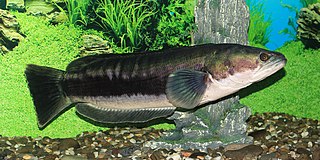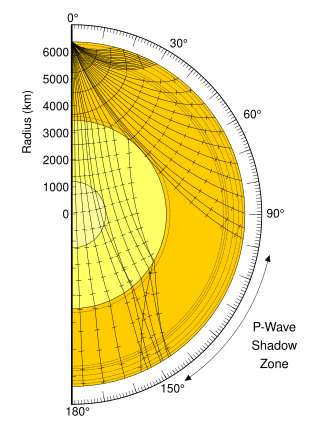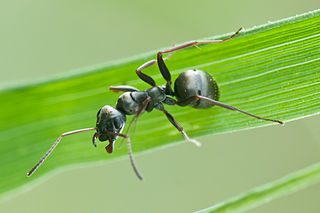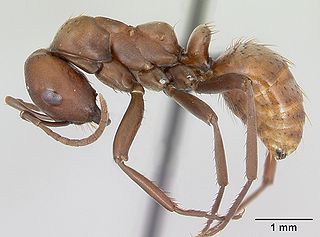Related Research Articles

Formica is a genus of ants of the family Formicidae, including species commonly known as wood ants, mound ants, thatching ants, and field ants. Formica is the type genus of the Formicidae, and of the subfamily Formicinae. The type species of genus Formica is the European red wood ant Formica rufa. Ants of this genus tend to be between 4 and 8 mm long. Ants belonging to the Formica genus possess a single knob or bump located between their thorax and abdomen. These ants primarily feed on honeydew, a sugary liquid produced by aphids. Formica ants appear to take on a shepherding role with smaller aphids, relocating them to different parts of plants to ensure a continuous food source for the aphids. By doing so, the ants can establish a relatively sustainable honeydew supply for both themselves and their colony.

Mussaurus is a genus of herbivorous sauropodomorph dinosaur that lived in southern Argentina during the Sinemurian stage of the Early Jurassic. It receives its name from the small size of the skeletons of juvenile and infant individuals, which were once the only known specimens of the genus. However, since Mussaurus is now known from adult specimens, the name is something of a misnomer.

Honghesaurus is an extinct genus of pachypleurosaur from the Anisian-age Guanling Formation of China. The type specimen measures about 47.1 cm (18.5 in) in total body length.

Channoidei is a suborder of fish in the order Anabantiformes. It contains two families: the true snakeheads (Channidae) and the dragon snakeheads (Aenigmachannidae).

A seismic shadow zone is an area of the Earth's surface where seismographs cannot detect direct P waves and/or S waves from an earthquake. This is due to liquid layers or structures within the Earth's surface. The most recognized shadow zone is due to the core-mantle boundary where P waves are refracted and S waves are stopped at the liquid outer core; however, any liquid boundary or body can create a shadow zone. For example, magma reservoirs with a high enough percent melt can create seismic shadow zones.

Formica fusca is a black-colored ant commonly found throughout Europe as well as parts of southern Asia and Africa. It has the common names silky ant or dusky ant. The range within the palaearctic region extends from Portugal in the west to Japan in the east and from Italy in the south to Fennoscandia in the north. Populations from North America have been split off as a separate species, Formica subaenescens. F. fusca nests are usually found in rotten tree stumps or under stones in clearcut areas and along woodland borders and hedgerows.

Avetheropoda, or "bird theropods", is a clade that includes Carnosaurs and coelurosaurs to the exclusion of other Dinosaurs.
Insect sting allergy is the term commonly given to the allergic response of an animal in response to the bite or sting of an insect. Typically, insects which generate allergic responses are either stinging insects or biting insects. Stinging insects inject venom into their victims, whilst biting insects normally introduce anti-coagulants into their victims.

Psylloidea is a superfamily of true bugs, including the jumping plant lice and others which have recently been classified as distinct families. Though the group first appeared during the Early Jurassic, modern members of the group do not appear until the Eocene, and Mesozoic members of the order are usually assigned to the possibly paraphyletic family Liadopsyllidae.

Formica sanguinea, or blood-red ant, is a species of facultative slave-maker ant in the genus Formica characterized by the ability to secrete formic acid. It ranges from Central and Northern Europe through Russia to Japan, China, the Korean Peninsula, Africa and also the United States. This species is coloured red and black with workers up to 7 mm long.

Atta cephalotes is a species of leafcutter ant in the tribe Attini. A single colony of ants can contain up to 5 million members, and each colony has one queen that can live more than 15 years. The colony comprises different castes, known as "task partitioning", and each caste has a different job to do.

A dinokaryon is a eukaryotic nucleus present in dinoflagellates in which the chromosomes are fibrillar in appearance and are more or less continuously condensed.
The Rung languages are a proposed branch of Sino-Tibetan languages. The branch was proposed by Randy LaPolla on the basis of morphological evidence such as pronominal paradigms. However, Guillaume Jacques and Thomas Pellard (2021) argues that these languages do not constitute a monophyly based on recent phylogenetic studies and on a thorough investigation of shared lexical innovations.

Formica cinerea is a species of ant in the family Formicidae.

Slave-making ants or slaver ants are brood parasites that capture broods of other ant species to increase the worker force of their colony. After emerging in the slave-maker nest, slave workers work as if they were in their own colony, while parasite workers only concentrate on replenishing the labor force from neighboring host nests, a process called slave raiding.

Polyergus rufescens is a species of slave-making ant native to southern Europe and parts of Asia, commonly referred to as the European Amazon ant or as the slave-making ant. It is an obligatory social parasite, unable to feed itself or look after the colony and reliant on ants of another species to undertake these tasks. To replenish these servant ants, it raids nearby ant colonies and carries home pupae and larvae, and these are reared to provide future workers for the colony. A newly mated female P. rufescens needs to make its way into one of these "host" nests, kill the host queen, and be accepted by the host workers in her place.

Anion-conducting channelrhodopsins are light-gated ion channels that open in response to light and let negatively charged ions enter a cell. All channelrhodopsins use retinal as light-sensitive pigment, but they differ in their ion selectivity. Anion-conducting channelrhodopsins are used as tools to manipulate brain activity in mice, fruit flies and other model organisms (Optogenetics). Neurons expressing anion-conducting channelrhodopsins are silenced when illuminated with light, an effect that has been used to investigate information processing in the brain. For example, suppressing dendritic calcium spikes in specific neurons with light reduced the ability of mice to perceive a light touch to a whisker. Studying how the behavior of an animal changes when specific neurons are silenced allows scientists to determine the role of these neurons in the complex circuits controlling behavior.

Clozapine N-oxide (CNO) is a synthetic drug used mainly in biomedical research as a ligand to activate DREADD receptors. Although CNO was initially believed to be biologically inert. However, it has been shown not to enter the brain after administration and to reverse metabolise in peripheral tissues to form clozapine. Clozapine can bind to a number of different serotonergic, dopaminergic and adrenergic receptors within the brain. Therefore, behavioural data using the CNO-DREADD system in neuroscience experiments have to be interpreted with caution.
Cruliviridae is a family of virus in the order of Bunyavirales. Unlike other families in the order, this family is unique in the sense that it is only used to contain crustacean-infecting bunyaviruses.
Simone Susanne Pika is a German ethologist and primatologist investigating the evolution and development of language, cognition and plasticity by focusing on distinct model systems such as corvids, great apes, monkeys and dolphins. Since 2017, she co-directs the Ozouga Chimpanzee Project, Loango National Park in Gabon. She is a full professor at the Institute of Cognitive Science, Osnabrück University, Germany.
References
- ↑ W. Czechowski, E. J. Godzińska, M. W. Kozłowski, 2002. Rescue behaviour shown by workers of Formica sanguinea Latr., F. fusca L. and F. cinerea Mayr (Hymenoptera: Formicidae) in response to their nestmates caught by an ant lion larva. Annales Zoologici 52: 423-431.
- ↑ Nowbahari, Elise; Hollis, Karen L. (2010). "Rescue behavior: Distinguishing between rescue, cooperation and other forms of altruistic behavior". Communicative & Integrative Biology. 3 (2): 77–79. doi:10.4161/cib.3.2.10018. ISSN 1942-0889. PMC 2889958 . PMID 20585494.
- ↑ Miler, Krzysztof; Turza, Filip (2021). ""O Sister, Where Art Thou?"—A Review on Rescue of Imperiled Individuals in Ants". Biology. 10 (11): 1079. doi: 10.3390/biology10111079 . ISSN 2079-7737. PMC 8614747 . PMID 34827072.
- ↑ Jack, Katharine M.; Brown, Michaela R.; Buehler, Margaret S.; Cheves Hernadez, Saul; Ferrero Marín, Nuria; Kulick, Nelle K.; Lieber, Sophie E. (2020). "Cooperative rescue of a juvenile capuchin (Cebus imitator) from a Boa constrictor". Scientific Reports. 10 (1): 16814. Bibcode:2020NatSR..1016814J. doi:10.1038/s41598-020-73476-4. ISSN 2045-2322. PMC 7544904 . PMID 33033278.
- ↑ Crampton, Joel; Frère, Celine H.; Potvin, Dominique A. (2022). "Australian Magpies Gymnorhina tibicen cooperate to remove tracking devices". Australian Field Ornithology. 39: 7–11. doi: 10.20938/afo39007011 . S2CID 246899904.
- ↑ Masilkova, Michaela; Ježek, Miloš; Silovský, Václav; Faltusová, Monika; Rohla, Jan; Kušta, Tomáš; Burda, Hynek (2021). "Observation of rescue behaviour in wild boar (Sus scrofa)". Scientific Reports. 11 (1): 16217. Bibcode:2021NatSR..1116217M. doi:10.1038/s41598-021-95682-4. ISSN 2045-2322. PMC 8355341 . PMID 34376774.